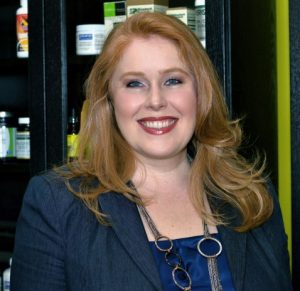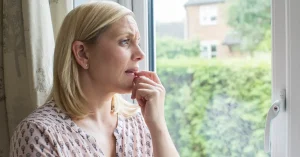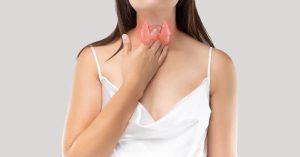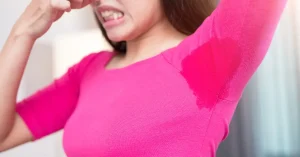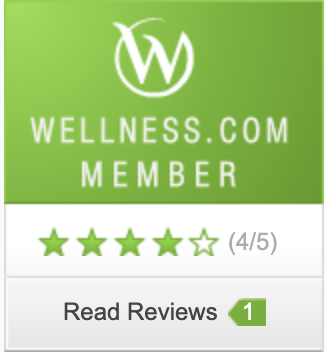Fibrocystic breast disease can cause pain, swelling, and lumpiness in the breasts. There are several treatment options when it comes to healing this condition, including many natural remedies. Understanding the fibrocystic breast disease treatment options available to you is key to finding relief.
This guide will define fibrocystic breast disease, answer frequently asked questions and address common misconceptions, and outline holistic treatment options. These helpful tips will help if you are dealing with this condition and looking for effective fibrocystic breast disease treatment.
What is Fibrocystic Breast Disease?
Fibrocystic breast disease is a condition in which there is lumpiness in one or both breasts. The lumps are caused by benign cysts, also known as tender areas of thickened tissue, and sometimes produce swelling, pain, and sensitivity of the breasts.
The condition is very common, affecting around 60% of women. It typically occurs between the ages of 30 and 50 years old. Many women experience no symptoms. Others experience mild swelling and tenderness. Some women go through constant breast pain and tenderness and develop several lumpy, nodular areas in both breasts.
Differentiating Between Fibrocystic Breasts and Breast Cancer
This part can be tricky.
Fibrocystic changes are often benign but can make detecting potential cancerous growths more challenging during a clinical breast exam.
If you notice any new lumps or changes in your breasts’ appearance or texture – don’t panic. But do consult with a healthcare professional for further evaluation (e.g., diagnostic mammogram or breast biopsy).
A word on estrogen…
Hormones play an essential role here.
By stimulating the estrogenic hormones, it can become difficult to differentiate between benign and malignant changes in breast tissue density; thus, regular self-exams and professional check-ups are important.
The bottom line? Stay vigilant with regular self-exams and professional check-ups. Knowledge is power.
Causes of Fibrocystic Breasts
The exact cause of this condition is not yet completely understood, but there are specific factors that seem to have a significant impact on its development.
Hormonal Imbalances as a Potential Cause
One major suspect is hormonal fluctuations during menstrual cycles. Research suggests that estrogen and progesterone imbalances may lead to changes in breast tissue, causing the pain and lumpiness commonly associated with fibrocystic breasts.
Other Risk Factors for Developing Fibrocystic Breasts
Besides hormones, other factors might contribute to this condition:
- Age: Women between 20-50 years old are more likely to experience fibrocystic breast changes due to hormonal shifts during their reproductive years.
- Caffeine consumption: Some studies have found a link between caffeine intake and increased breast pain, however further research is still needed.
- Dietary habits: Poor diet choices can affect hormone levels, potentially contributing to fibrocystic breasts. For example, high sodium intake could exacerbate fluid retention and swelling in the breasts.
In addition to these risk factors, it’s essential to consider not only your lifestyle but also genetic predispositions when assessing potential causes of fibrocystic breast disease.
Estrogen Metabolism and Its Connection to Fibrocystic Breasts
Another piece of the puzzle is estrogen metabolism. Research indicates that how your body metabolizes estrogen can impact breast tissue changes, potentially leading to fibrocystic breasts.
Hormonal imbalances and lifestyle factors are two main components that can lead to fibrocystic breasts, so consulting with healthcare professionals is important for determining the best treatment plan. It is essential to speak with a healthcare expert such as Dr. Karen Threlkel who focuses on holistic therapies for female health issues in order to better comprehend your individual risk factors and craft an appropriate treatment program. Karen Threlkel specializes in holistic treatments for women’s health issues.
4 Frequently Asked Questions and Common Misconceptions
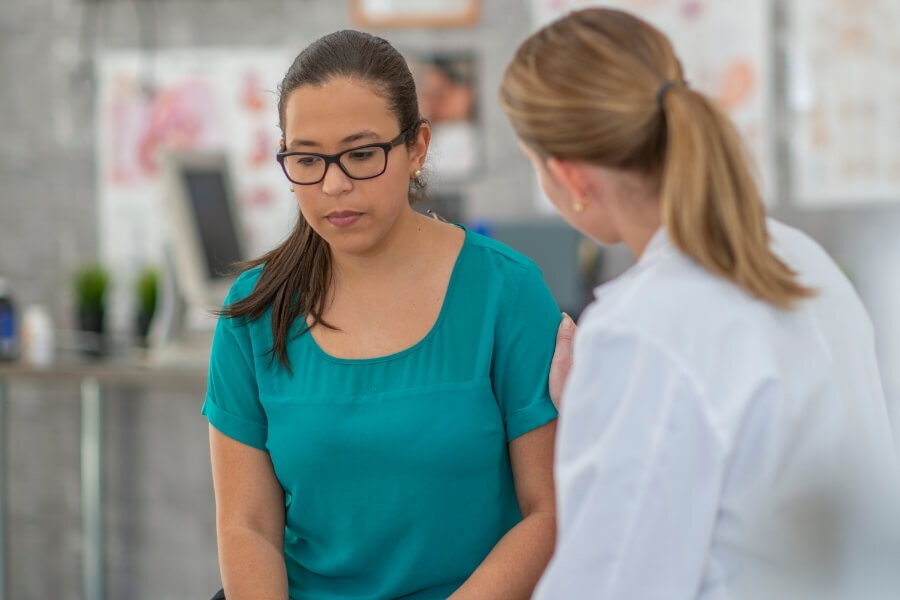
There are common misconceptions about fibrocystic breast disease that can cause a lot of confusion for women who are suffering from this condition. Here are some of the most frequently asked questions about the disease.
1. Are the Cysts Present in Fibrocystic Breasts Cancerous?
No – the cysts that are present in fibrocystic breasts are benign, or non-cancerous. They also do not increase your risk of breast cancer. These lumps can, however, mimic or mask breast cancer, making it more difficult to detect. That is why if you are experiencing pain, tenderness, or swelling of the breasts, it is very important to make an appointment for a breast exam with a medical professional before attempting self-treatment.
2. What Is the Cause of Fibrocystic Breasts?
Experts don’t know the exact cause of fibrocystic breasts but they strongly suspect they are due to hormonal changes. Many women experience hormonal fluctuations, particularly excess estrogen, at puberty, pre-menopause, and during stressful situations. Fibrous tissue may also form during the first half of a woman’s menstrual cycle, known as the follicular phase when estrogen levels are at their highest.
A woman’s mammary glands prepare for lactation when her body prepares itself for pregnancy each month. The body will break down these new breast cells if she does not conceive, and if the woman’s hormones are out of balance, the cells can build up, causing inflammation and cystic breast tissue.
3. Will Symptoms Go Away on Their Own?
Symptoms of breast tenderness and pain will persist as long as they are left unaddressed. The hormones that are present in a premenopausal woman’s body cause the symptoms. Symptoms will typically disappear over time but usually only after menopause. The lumps will continue to cause pain and tenderness until this time, so finding a solution for your fibrocystic breasts can make a world of difference in your quality of life.
4. Are Symptoms Consistent?
Some women experience only mild symptoms, with minimal breast pain or tenderness. These symptoms can also be inconsistent and only last a little while, usually occurring before menstruation. Other women may only feel lumps or pain during a breast examination performed by the woman herself or by a doctor. Fibrocystic breast tenderness and pain may be constant, however, in other women.
Every woman’s body is different, and there is no single rule for which symptoms occur and how often. Symptoms that do occur should be noted and discussed with a medical professional for further analysis.
Fibrocystic Breast Disease Treatment
Treatment for fibrocystic breasts is directed at relieving a woman’s individual symptoms and correcting her hormonal irregularities. Medications, such as birth control and non-steroidal anti-inflammatory drugs, like aspirin, can help relieve pain, but these drugs often come with a list of side effects and offer only temporary, surface-level relief.
Holistic treatment addresses the pain naturally without any major risks or side effects. Approaching your symptoms through all-natural means can reduce breast tenderness and swelling while promoting health and wellness throughout the whole body.
Some effective holistic treatment options for fibrocystic breast disease include:
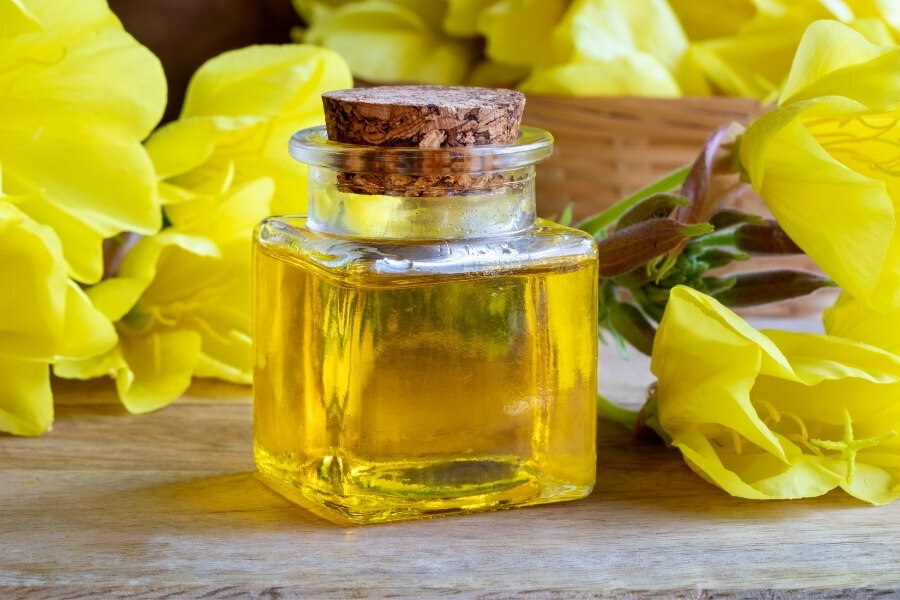
4 Holistic Treatments
Vitamins
Some reports suggest certain vitamins can reduce breast pain and other symptoms associated with fibrocystic breast disease. These include vitamin A, vitamin E, vitamin B6, and vitamin C to reduce painful symptoms and promote overall health and well-being.
Vitamins that may help to relieve the symptoms of fibrocystic breasts include vitamins E, A, and B complex. Vitamin E is an antioxidant that helps protect cells and fight damage caused by free radicals, while also helping to reduce inflammation. Vitamin A plays a role in promoting healthy skin, while vitamin B complex can help to alleviate pain associated with fibrocystic breast changes because it helps the body produce energy for use in the production of collagen, which helps maintain strong tissue structures. Vitamin D is another important nutrient for those with fibrocystic breasts as it has been shown to reduce inflammation and regulate hormone levels.
Magnesium Intake
Increase your magnesium intake through diet or supplementation for its potential benefits on hormonal balance and reducing inflammation.
A little magnesium can go a long way, my friends.
Omega 3 Fatty Acids Benefits
Fish oil supplements rich in omega-3 fatty acids may help decrease inflammation and promote healthy estrogen metabolism – both essential factors when dealing with fibrocystic breasts.
Say hello to healthier fats for happier breasts.
Iodine’s Role in Alleviating Symptoms
- Balancing Hormones:
Iodine is essential for thyroid hormone production, which plays a crucial role in regulating hormonal balance and reducing estrogenic stimulation of breast tissue. - Supporting Connective Tissue:
Adequate iodine levels can help maintain the integrity of connective tissue within the breasts, potentially easing fibrocystic symptoms.
It’s always wise to talk with your medical provider prior to beginning any supplement program.
Supplements
Supplements such as Evening Primrose Oil, iodine, and red raspberry leaf all contain powerful benefits that can reduce symptoms related to fibrocystic breast disease.
Evening Primrose Oil contains essential fatty acids that can promote pain relief. Many women with breast tenderness have an iodine deficiency, therefore taking iodine supplements can promote overall breast wellness in addition to reducing pain. It’s best to test iodine levels before using this therapy.
Red raspberry leaf works by detoxing excess estrogen to balance your hormones. These, among other beneficial supplements, make a world of difference in maintaining breast health and preventing fibrocystic breasts from getting worse.
Dietary changes
Let’s talk about the power of food.
When it comes to fibrocystic breast disease, making specific dietary changes can help alleviate some discomforts and improve overall well-being.
Reducing Caffeine Consumption
I know, I know – we all love our morning coffee or tea ritual.
However, studies suggest that reducing caffeine intake may help decrease breast pain associated with fibrocystic breasts.
You don’t have to quit cold turkey; try cutting back gradually and see how your body responds.
Limiting Sodium Intake
Salt lovers beware: excessive sodium consumption might contribute to breast tissue swelling and tenderness in women with fibrocystic breasts.
To reduce sodium intake, focus on consuming whole foods while avoiding processed products high in salt content.
Incorporating Anti-inflammatory Foods
Fight inflammation from within by adding anti-inflammatory foods to your diet.
- Turmeric: This golden spice contains curcumin which has powerful anti-inflammatory properties. Add it generously to your dishes or enjoy a warm cup of turmeric tea.
- Berries: Rich in antioxidants like quercetin and ellagic acid, berries can help reduce inflammation and protect against cell damage.
- Leafy Greens: Spinach, kale, and other leafy greens are packed with vitamins, minerals, and antioxidants that promote overall health.
By embracing these nutritious foods, you can bolster your breast health while also increasing your overall vitality.
Balancing your hormones
Hormonal imbalance is the key component in fibrocystic breast disease. There are simple lifestyle changes that you can make to balance your hormones naturally to reduce your breast pain and other symptoms caused by this condition. Bioidentical hormone replacement therapy is another alternative option for more severe circumstances to treat fibrocystic symptoms and promote overall health, wellness, and well-being.
The treatment you use will depend on your unique system and imbalances. It’s advised to see a doctor if you’re experiencing symptoms to which method will be best for you.
Lifestyle Modifications for Fibrocystic Breast Disease
Besides dietary changes and supplementation, certain lifestyle modifications can help manage the symptoms of fibrocystic breast disease.
Regular Exercise Benefits
Studies show that regular physical activity can improve hormonal balance and overall well-being, which may alleviate breast pain associated with fibrocystic breasts.
Aim for at least 30 minutes of moderate-intensity exercise most days of the week – your body will thank you.
Stress Management Techniques
Hormonal imbalances caused by chronic stress might exacerbate fibrocystic breast symptoms.
Incorporating techniques like yoga, meditation, and deep breathing into your daily life could be a great way to help manage the bothersome signs of fibrocystic breast symptoms due to hormonal imbalances from chronic stress. Importance of Wearing a Supportive Bra Last but not least: invest in a good bra. A properly fitting, supportive bra can reduce discomfort caused by tender or swollen breasts. Consider getting professionally fitted to ensure you’re wearing the right size and style for maximum comfort.
Find Effective Relief & Fibrocystic Breast Disease Treatment Today
Women who are experiencing the breast pain and tenderness associated with fibrocystic breast disease can find effective relief through all-natural solutions. Medication is no longer the only option.
Dr. Karen Threlkel is a naturopathic doctor who primarily serves women and their health concerns in the greater D.C. area. Contact Dr. Threlkel today if you are dealing with fibrocystic breast disease and would like to learn more about drug-free, holistic treatment options and natural relief.

